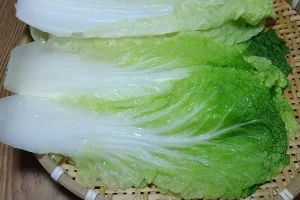Bắp Cải Cuộn Thịt (Vietnamese Pork Cabbage Rolls)
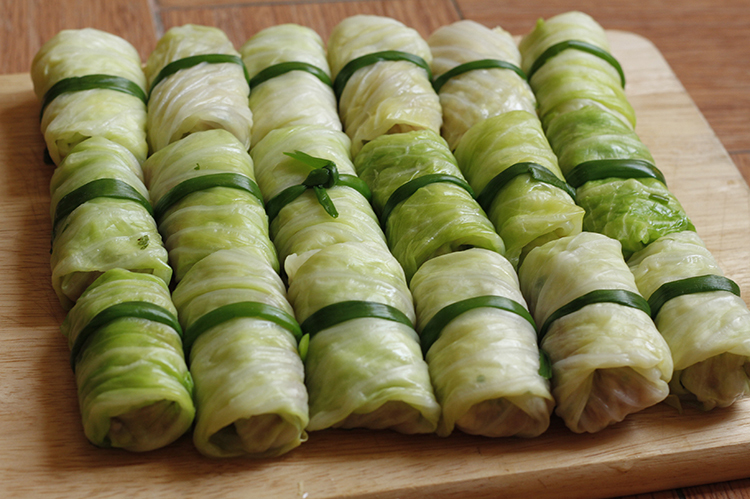
Ingredients
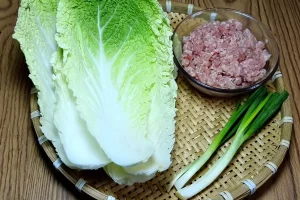
- 250g ground pork
- 1 whole cabbage
- 2 shallots
- 40g green onions
- Seasonings: Fish sauce, salt, seasoning powder, pepper
Nutritional Information
For: vegetarians and vegans
Calories per serving: ~120 kcal (1 roll)
Key nutrients
- Fiber: From cabbage, improves gut health.
- Vitamin C: Supports immunity and skin health.
- Folate: Beneficial for cell growth and repair.
Step 1:
Prepare Cabbage Leaves
- Method 1: Core the cabbage, boil in salted water (½ tsp salt) for 3–4 minutes, then plunge into ice water. Peel off softened leaves and trim tough stems.
- Method 2: Gently separate leaves, blanch individually for 30 seconds, then cool in ice water. Drain and trim stems.
For green onions: Blanch ⅔ of them for tying rolls; finely chop the rest.
Step 2: Make the Filling
-
Marinate ground pork with minced shallots, ½ tbsp fish sauce, 1 tsp seasoning powder, and ⅓ tsp pepper. Mix well and rest for 15 minutes
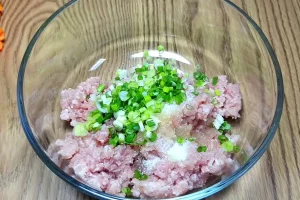
Step 3: Assemble Rolls
-
Lay cabbage leaves flat, add pork filling, and roll tightly. Secure with blanched green onion “strings.”

Step 4: Steam
-
Line a steamer with extra cabbage leaves. Arrange rolls inside and steam for 20 minutes over boiling water.
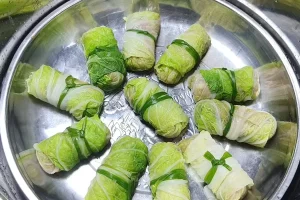
The Finished Dish
These steamed cabbage rolls are a harmony of textures and flavors—naturally sweet from the tender cabbage leaves enveloping juicy, well-seasoned pork. Steaming preserves the dish’s succulence, keeping the meat moist and the cabbage delicately soft.
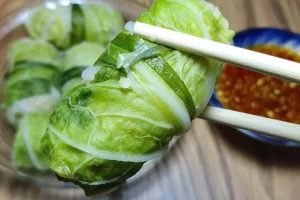
For serving, pair them with classic Vietnamese dipping sauces:
-
Sweet & sour fish sauce (nước mắm chua ngọt) for a bright, tangy kick
-
Soy sauce for a savory, umami accent
Each bite delivers comfort, showcasing the simplicity and depth of Vietnamese home cooking.
Pork Cabbage Rolls (Bắp cải cuốn thịt) originated in the rural areas of Vietnam, where locals made the most of readily available ingredients to create delicious and nutritious dishes. Cabbage and pork—two affordable and accessible staples—became the core ingredients, making this dish a common feature in Vietnamese family meals.
The Influence of Regional Culinary Cultures
Vietnamese cuisine has been strongly influenced by various cultures, from Chinese and French to Japanese. However, bắp cải cuốn thịt retains its distinct Vietnamese identity, with preparation methods and seasonings unique to the country’s culinary traditions.
